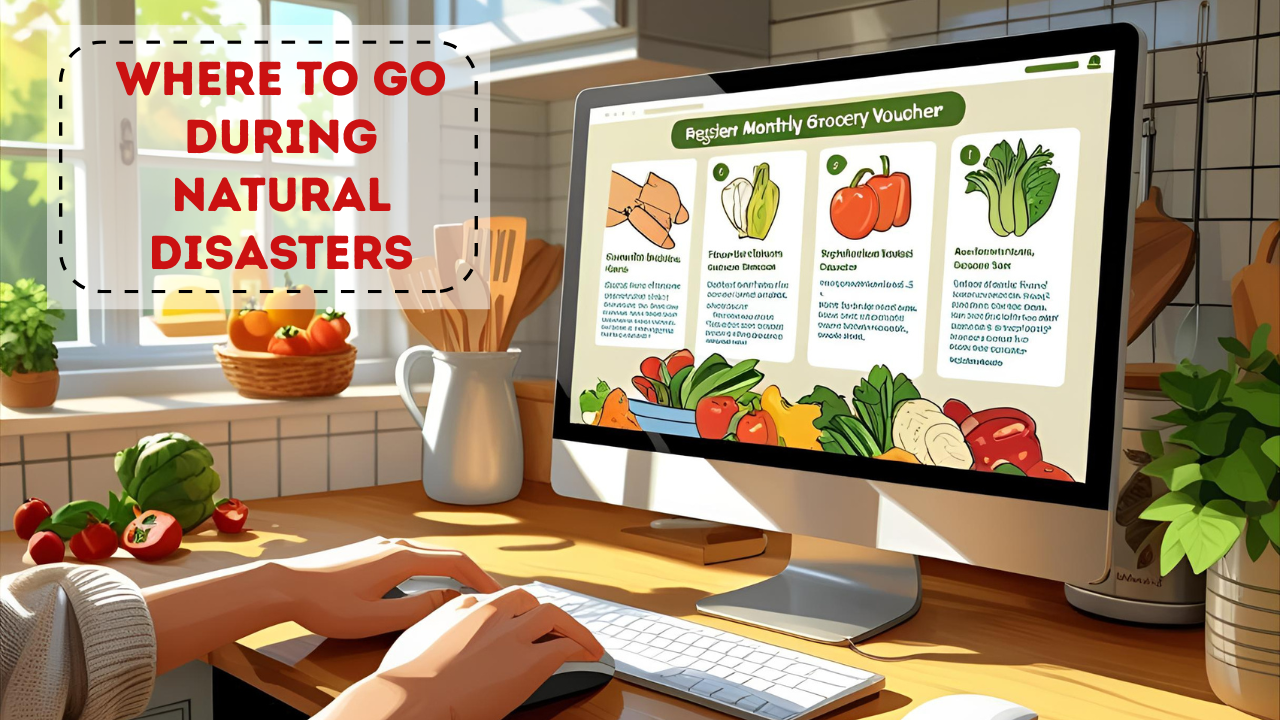With rising grocery costs and economic uncertainty, many households are finding it harder to put food on the table each month. To ease this burden, governments and organizations offer monthly grocery vouchers or food stamps to help low-income families, seniors, and individuals in need access essential nutrition.
If you’re wondering how to register for these monthly benefits in 2025, this guide will walk you through everything—from eligibility criteria and application steps to where you can use the benefits.
Table of Contents
- What Are Grocery Vouchers and Food Stamps?
- Who Is Eligible to Apply?
- Benefits You Can Receive
- How to Apply for Monthly Grocery Assistance
- Documents You’ll Need
- Where to Use Your Vouchers or EBT Card
- Tips for a Smooth Application Process
- Final Thoughts: Don’t Miss Out on Available Food Support
1. What Are Grocery Vouchers and Food Stamps?
Grocery vouchers and food stamps are part of public assistance programs designed to help people buy nutritious food each month. These benefits are often provided through national or state-level food aid programs like:
- SNAP (Supplemental Nutrition Assistance Program) in the United States
- Food support schemes by local governments
- EBT (Electronic Benefit Transfer) cards that work like debit cards at participating stores
- Paper vouchers or digital coupons issued by welfare departments or social service agencies
The aim is to ensure no one goes hungry, especially those facing unemployment, underemployment, or sudden financial crisis.
2. Who Is Eligible to Apply?
Eligibility criteria may vary slightly by location, but in general, you may qualify if you meet the following conditions:
- Low to moderate household income
- U.S. citizenship or legal residency (for programs like SNAP)
- Limited savings and assets
- Unemployment or reduced work hours
- Participation in other aid programs (e.g., Medicaid, TANF)
Special priority is often given to:
- Families with children
- Seniors over 60
- People with disabilities
- Pregnant or nursing women
- Veterans and low-income workers
Check your state or local agency’s specific guidelines for exact income limits and qualifying conditions.
3. Benefits You Can Receive
Once approved, recipients typically receive monthly benefits, which can include:
- Electronic benefits through an EBT card
- Grocery vouchers or discount coupons
- Home-delivered food packages in some areas
- Supplemental nutrition for pregnant women and children (via WIC programs)
On average, benefits range from $150 to $600 per month, depending on household size, income, and location.
4. How to Apply for Monthly Grocery Assistance
Applying is easier than you might think. Here’s a step-by-step guide:
Step 1: Find the Right Program
Start by identifying the correct program for your area. In the U.S., this would be SNAP, managed by your state’s Department of Human Services or Social Services.
Step 2: Apply Online or In Person
Most programs now allow you to apply online, but you can also visit a local office or call for assistance. Go to your state’s benefits portal or use tools like Benefits.gov or USDA SNAP.
Step 3: Fill Out the Application
You’ll be asked to provide information about your:
- Household members
- Monthly income and expenses
- Housing situation
- Employment status
Step 4: Submit Required Documents
Upload or provide copies of necessary documentation (see next section).
Step 5: Attend an Interview
Some programs require a brief phone or in-person interview to verify details. This is often the final step before approval.
5. Documents You’ll Need
To complete your application, have the following documents ready:
- Government-issued ID (driver’s license, passport)
- Proof of address (utility bill, lease)
- Income verification (pay stubs, unemployment letters)
- Social Security numbers for all household members
- Medical bills (if claiming deductions)
- Bank statements (for asset verification)
Having these documents prepared in advance can speed up your application.
6. Where to Use Your Vouchers or EBT Card
Once approved, you’ll receive benefits on a monthly schedule, typically loaded to your EBT card or given as paper/digital vouchers. These can be used at:
- Grocery stores and supermarkets
- Farmers’ markets (many accept EBT)
- Convenience stores and local food co-ops
- Online retailers like Amazon or Walmart (in participating states)
Look for signs that say “We Accept EBT” or check the list of approved vendors on your state’s official site.
Note: Benefits cannot be used to buy alcohol, tobacco, vitamins, hot prepared foods, or non-food items.
7. Tips for a Smooth Application Process
To avoid delays or rejection:
- Apply as early as possible—don’t wait until you’re out of food.
- Double-check your form before submitting to avoid mistakes.
- Respond to all calls or emails from your caseworker promptly.
- Track your application status online or by calling your local office.
- Ask for help—nonprofits like Feeding America, local food banks, and community centers often have application assistance teams.
8. Final Thoughts: Don’t Miss Out on Available Food Support
Monthly grocery vouchers or food stamps offer more than just food—they provide peace of mind during difficult times. Whether you’re going through job loss, recovering from illness, or managing life on a fixed income, these programs are designed to support you.
Millions of families rely on food assistance every year—and if you’re struggling, you’re not alone. The process is confidential, straightforward, and in many cases, completely digital in 2025.
So don’t wait. Check your eligibility, gather your documents, and apply today. Every meal matters, and help is closer than you think.

